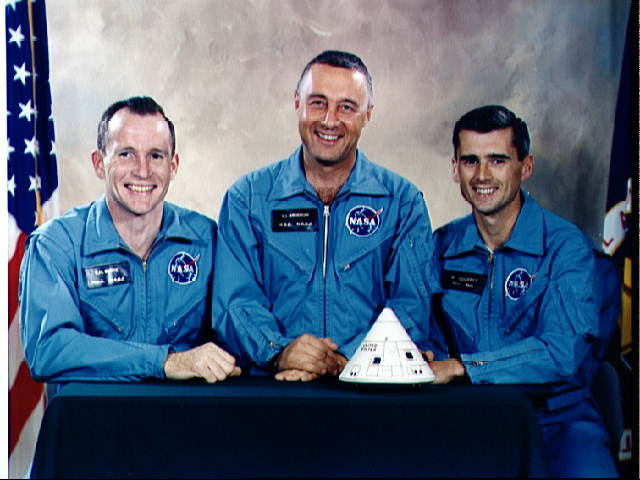Apollo 18
Last night, I went to see Discover the Truth: Apollo 18. There were many things wrong with the movie that made it terribly funny. First of all, there was a docking hatch on the LK when there shouldn’t have been. Secondly, the space suits buttoned up the front when they shouldn’t have. Third, they called the command module an orbiter; the only ship to be called an orbiter is what most people consider the Space Shuttle. Fourth, they put an all rookie crew on board; NASA never sent an all rookie crew to the moon. Lastly, there was flawed logic on the part of the astronauts. There are many more mistakes in the movie, but these mistakes made it a comedy of errors. My dad was also quick to point out that the rocks moved and screamed; I guess they went off the Bible that even the rocks cry out.
Currently
I read 158 pages in Up Your Score: The Underground Guide to the SAT.
Favorite Quotes from Style Mapping:
- Stardust has a harsh tone to it because of the dull and clattering effects to the whole novel.
-From: http://edison-eddie.blogspot.com/
- Different from the others, Eugenides conducts a style that is scholarly yet gloomy while the reader stumbles on the cacophonous language.
-From: http://kimberlyelephant.blogspot.com/
- It is written like an infuriated tirade, with no hint of class.
-From: http://ascrapofparchment.blogspot.com/
- The expressive adjectives such as "endless," "gnashing," "bitter," "hobbled," "pinewood," "oblique" portrays a lustrous description and creates an experience of the dark mood of the passage.
-From: http://mywebpaige.blogspot.com/
- The language is rough and coarse in order to portray the common colloquialisms of southern Texas.
-From: http://rivers-thenewzealander.blogspot.com/
Responses to Quotes:
- I picked this one because of the use of the word, “clattering”. That creates a vivid mental sound effect of the writing.
- Once again, I picked this one for the vivid mental sound effect that “cacophonous” creates.
- I can just imagine the author in this case going into a rant as he writes the selection.
- I like the examples of the sorts of adjectives that are used to describe things in the selection.
- The use of common colloquialisms of southern Texas creates a vivid mental sound effect of how the speaker is speaking in the selection.
Long Poem:
“
Chernobyl”
by:
Eugene, Oregon, 1986
They said it couldn’t happen, but it did:
A nuclear reactor blew its lid.
Though the cause is still a mystery,
The
Ukraine may be history,
With a burning, melting core,
Twelve miles from a reservoir
In the very greatest wetland
In all Europe, south of
Finland.
Water is contaminated,
Farmland is irradiated.
People surely suffer,
Yet parade just as before,
But life and death are not the same any more.
Shall we stake our lives on fickle winds and weather?
Or shall we see that we are all in this together?
It was thirty-six hours after the explosion
Before the Russians set their wheels in motion.
Evacuation came too late
And passing time had sealed the fate
Of the nearby town of
Pripyat,
Where twenty-five thousand people caught
In a radioactive cloud
Of which no knowledge was allowed
All had their blood cells altered
While the Russian leaders faltered.
The radioactivity
Had blown across the
Baltic SeaBefore Ukrainians ever had a notion.
Shall we stake our lives on fickle winds and weather?
Or shall we see that we are all in this together?
Do you think our power structure’s much the better?
Do you think that they reveal the truth unfettered?
The official line they gave ya
Was that over
ScandinaviaRadiation’s barely heightened,
You’re unnecessarily frightened,
There’s no cesium, no iodine,
No danger, you’ll be fine,
The cloud is dissipating,
Radiation is decaying,
By the time it reaches here
There’ll be nothing left to fear,
It’s bound to be about too low to measure.
Shall we stake our lives on fickle winds and weather?
Or shall we see that we are all in this together?
Did you hear that our reactors are much safer?
Did you know that it’s your life you’re asked to wager?
Chernobyl had safety systems
Far too numerous to list ‘em:
If they shut it down to fuel it,
They had water for to cool it;
They had insulated wires
Not expected to catch fire;
And they had containment structures
Which were not supposed to rupture;
And yet the roof was blown,
As photographs have shown.
But it cannot happen here, you’re in no danger.
Shall we stake our lives on fickle winds and weather?
Or shall we see that we are all in this together?

